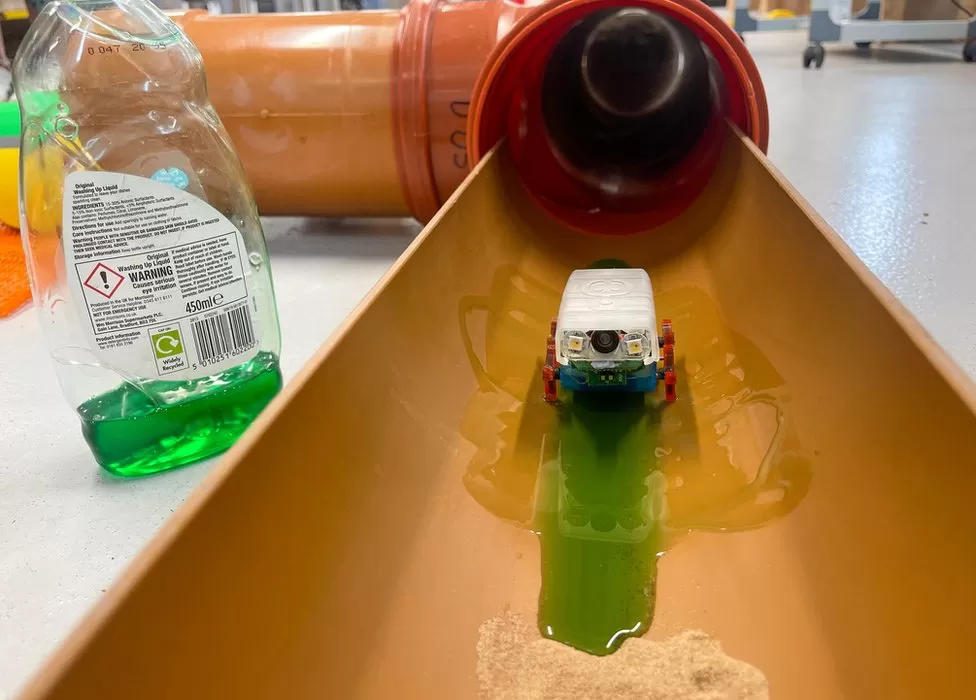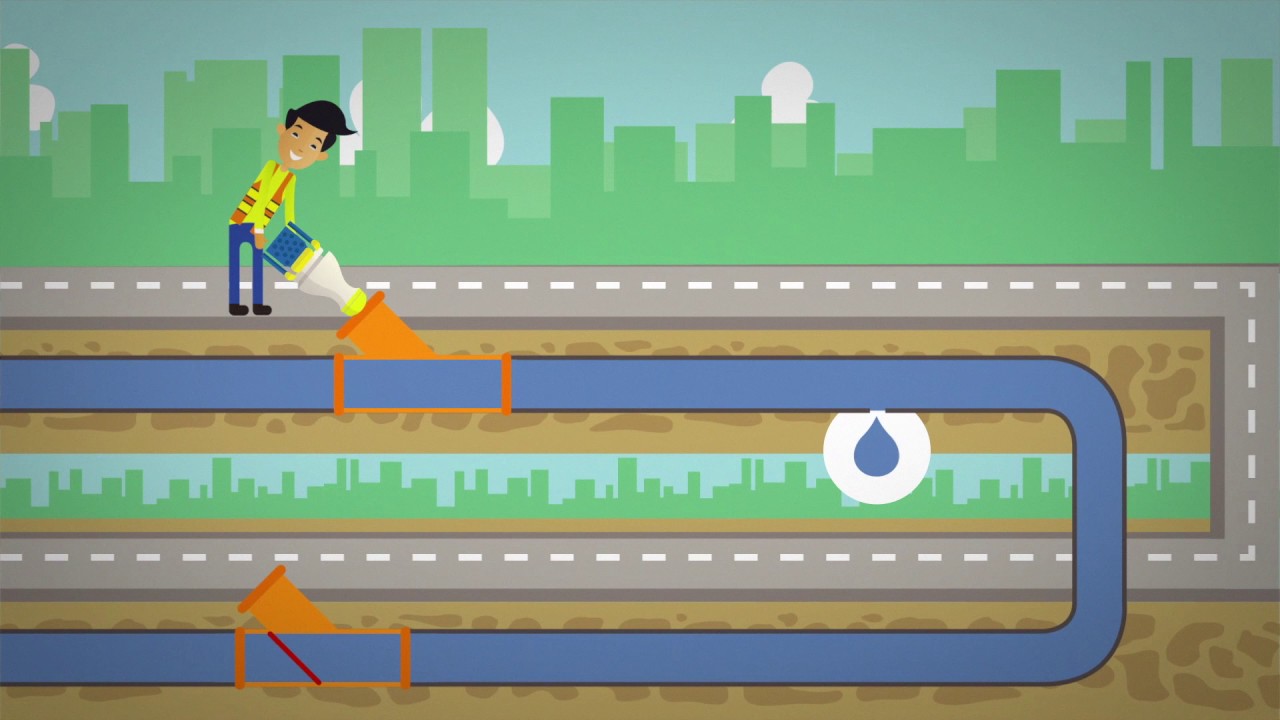Robots In Water Pipes Could Stop Billions Of Liters Of Water From Leaking
Miniature robots in water pipes have been created by scientists to perform routine inspections of pipe networks for defects and spills. They claim that without robots, network maintenance is impossible.
Author:Daniel JamesReviewer:Karan EmeryDec 26, 202245.9K Shares1M Views

Ofwat, which regulates the economics of the water business, estimates that almost three billion liters of water are wasted each day due to leaks in England and Wales's hundreds of thousands of kilometres of water pipes.
Miniature robots in water pipeshave been created by scientists to perform routine inspections of pipe networks for defects and spills. They claim that without robots, network maintenance is impossible. Companies are "spending billions" on leaks, Water UK, an industry group, told BBCNews.
However, a study by Ofwat highlighted a lack of investment from water providers. Several were singled out for "letting down consumers and the environment" by not investing enough in upgrades, according to the report. In response, Water UK claimed that leakage was at "its lowest level since privatization."
Leaks are a pervasive and perplexing issue: Millions of homes in the United Kingdom rely on water delivered over tens of thousands of miles of pipe in varied states of disrepair.
“„In [this region] alone, we look after more than 8,500km (5,282 miles) of pipe and only about half the leaks in those pipes are visible, which means it's complicated to pinpoint where [the rest] are.- Colin Day, Essex and Suffolk Water
Wasted water is a critical topic this year. South East Water, South West Water, and Yorkshire Water still have localized hosepipe restrictions after the summer drought, according to Water UK. Ofwat believes 20% of England and Wales customers struggle to pay their water payment due to the cost of living problem.
Ofwat says enterprises have cut leakage by 6% in the last year. The industry will halve water loss by 2050. Water UK agreed to "accelerate" work.
The Leak Finding Robot
An MIT group working under the name PipeGuard has created a robot that can detect even the tiniest breaches in pipelines made of any material. It has two types, one of which floats down a pipe unobtrusively and the other of which may be operated remotely; either one can be placed into the water supply via any fire hydrant.
The technology, which has been in the works for 12 years, makes use of a miniature robotic shuttlecock equipped with sensitive sensor on its rubber skirt in order to collect data on diverging pressures. While doing so, it keeps an eye on its whereabouts. After the 'bot is caught using a net, the data it has uploaded twice is compared to look for discrepancies, which indicate where the breach could be.
When tested in the field at Saudi Arabia's King Fahd University of Petroleum and Minerals, the robot was able to locate a fake leak one hundred percent of the time. Now it's being put into use in Monterrey, Mexico, to help reduce the $80 million wasted annually due to the wastage of 40% of the city's water supply.
In the future, developers plan to develop a model that can adapt to any size pipe and include a leak-fixing mechanism to fix minor problems as they arise.

MIT Leak Detection Robot for City Water Distribution Systems
Water Streaming Beneath Our Feet
Approximately 217,000 miles of water main may be found in England and Wales, with over 300,000 miles located in the UK as a whole. Material diversity characterizes the network's construction. According to the Energy Saving Trust, a typical British home consumes about 350 liters of water daily.
Northumbria Water, which owns both Essex and Suffolk Water, took us to the location of a leak they were trying to fix. A crew was digging cautiously at a suburban location, avoiding the underlying sewage line, gas supply, and electrical wires in order to find an underground leak.
“„This one wasn't visible - we detected it through monitoring flow in our network. We've covered the biggest leaks - burst pipes that that people see. It's these smaller, hidden leaks that we need to find.- Colin Day, Essex and Suffolk Water
Sealants that may be safely injected into pipes to mend fractures are among the "non-dig" remedies that Essex and Suffolk Water is experimenting with to prevent leaks. Some researchers believe that tiny robots will usher in a new era of leak detection and prevention technology.
Pipe Patrol Robots
Some firms already deploy tethered robots to inspect difficult pipelines. However, the majority of the network is now unreachable without digging. This is where artificially intelligent, much smaller devices come in. A new generation of underground robotic pipe patrollers is being tested at the University of Sheffield's Integrated Civil and Infrastructure Research Centre (ICAIR).
Pipebots are mobile robots that have cameras for eyes and all-terrain legs. They are being created in partnership with the water sector to patrol pipelines and detect fractures and flaws before they become leaks.
“„Companies only respond reactively to faults at the moment, not proactively. We need to have the presence of robots so they can continuously collect data before the onset of faults.- Prof Kirill Horoshenkov
“„They go down the pipe, taking photographs, and they have a microphone to listen to the pipe. They are intended to determine whether or not the pipe is likely to develop a problem.- Prof Kirill Horoshenkov
Prof Netta Cohen of the University of Leeds, an artificial intelligence researcher, believes that communication is the most difficult task for pipebots.
“„Underground, there's no GPS. So they will communicate with each other at short ranges (using sound or wifi).- Prof Netta Cohen, University of Leeds
Her colleagues and her are working on a system in which a bigger "mother" robot transports and deploys a collection of tiny robots.
“„They will deposit these little guys to go into the smaller pipes and collect them when they're done. We will need a whole society of these robots to work in all these kilometres of pipe.- Prof Netta Cohen, University of Leeds
“„If you think about the state of our infrastructure, it is so urgent to do something. It has implications not just for industry, but for our impact on the environment.- Prof Netta Cohen, University of Leeds
Final Words
Prof Cohen claims that the water pipes under our feet are among the most hostile ecosystems on the planet. Without robots, we can't accomplish this.
The ICAIR team anticipates that the first pipebots will patrol the water network within five years. Until then, water providers will have to dig through the tangle of gas, power, wifi, and sewage lines to repair leaks.

Daniel James
Author
Daniel James is a distinguished gerontologist, author, and professional coach known for his expertise in health and aging.
With degrees from Georgia Tech and UCLA, including a diploma in gerontology from the University of Boston, Daniel brings over 15 years of experience to his work.
His credentials also include a Professional Coaching Certification, enhancing his credibility in personal development and well-being.
In his free time, Daniel is an avid runner and tennis player, passionate about fitness, wellness, and staying active.
His commitment to improving lives through health education and coaching reflects his passion and dedication in both professional and personal endeavors.

Karan Emery
Reviewer
Karan Emery, an accomplished researcher and leader in health sciences, biotechnology, and pharmaceuticals, brings over two decades of experience to the table. Holding a Ph.D. in Pharmaceutical Sciences from Stanford University, Karan's credentials underscore her authority in the field.
With a track record of groundbreaking research and numerous peer-reviewed publications in prestigious journals, Karan's expertise is widely recognized in the scientific community.
Her writing style is characterized by its clarity and meticulous attention to detail, making complex scientific concepts accessible to a broad audience. Apart from her professional endeavors, Karan enjoys cooking, learning about different cultures and languages, watching documentaries, and visiting historical landmarks.
Committed to advancing knowledge and improving health outcomes, Karan Emery continues to make significant contributions to the fields of health, biotechnology, and pharmaceuticals.
Latest Articles
Popular Articles